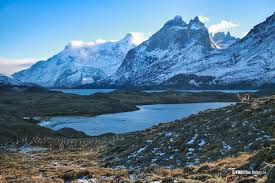Community-Based Disaster Preparedness: Lessons from North American Resilience
Across North and South America, the increasing frequency and intensity of natural disasters—from devastating hurricanes and wildfires to powerful earthquakes and widespread flooding—underscore the critical need for robust community-based disaster preparedness. This article examines contemporary community and social development challenges, drawing crucial lessons from successful resilience initiatives in North America. By embracing these proven strategies, we can foster stronger, more unified communities and build a safer, more resilient future for all.
Building a Foundation of Resilience: Key Strategies
Effective disaster preparedness isn't merely a reactive measure; it's a proactive, community-driven process. Its foundation rests on several interconnected pillars:
1. The Power of Community: Collective Strength in Adversity
Communities are the bedrock of society. During crises, the ability to unite, support one another, and effectively leverage collective resources proves paramount. Fostering a strong sense of community is the cornerstone of successful disaster preparedness and recovery.
2. Forging Strong Networks: Collaboration for Enhanced Response
Effective disaster response necessitates robust networks connecting community members, organizations, and government authorities. Establishing clear communication channels and strategic partnerships significantly enhances our collective capacity to respond to and recover from disasters.
3. Engaging Local Stakeholders: Inclusive Planning for Lasting Impact
Meaningful engagement with local stakeholders—community leaders, organizations, and residents—is essential for developing truly effective disaster preparedness strategies. Involving everyone in planning and implementation ensures diverse perspectives are considered, leading to more inclusive and resilient outcomes.
4. Education and Awareness: Empowering Communities Through Knowledge
Education empowers individuals and communities to take proactive steps toward disaster preparedness. Providing accessible, culturally relevant information raises awareness of potential risks, emergency procedures, and available resources, fostering a culture of preparedness.
5. Resilient Infrastructure and Housing: Protecting Lives and Assets
Investing in resilient infrastructure and housing is crucial for minimizing the impact of disasters. Designing and constructing buildings and infrastructure capable of withstanding potential hazards protects lives and significantly reduces the economic and social consequences of disasters.
6. Harnessing Technology: Innovation for Enhanced Response
Technological advancements offer transformative solutions for disaster preparedness and response. From sophisticated early warning systems to crowd-sourced mapping and real-time communication platforms, technology significantly enhances our capacity to mitigate and manage disasters.
7. Fostering Social Cohesion and Inclusion: Ensuring No One is Left Behind
Inclusive communities are inherently more resilient. Promoting social cohesion and inclusion ensures that vulnerable populations—including the elderly, people with disabilities, and marginalized communities—are not overlooked during emergencies.
8. Cultivating Volunteerism and Community Engagement: Strengthening Collective Capacity
Volunteers are indispensable during disaster response and recovery. Encouraging active participation in community-based organizations and initiatives strengthens our collective capacity to prepare for and effectively respond to disasters.
9. Learning from the Past: Continuous Improvement Through Reflection
Analyzing past disasters, identifying successes and failures, and learning from our experiences are critical for improving future strategies. By embracing best practices and acknowledging past mistakes, we continuously enhance our resilience.
10. Empowering Local Economies: Building Economic Resilience
Supporting local economies and fostering self-sufficiency significantly enhances community resilience. Strengthening local businesses and promoting sustainable practices builds economic resilience that can withstand and recover from the impacts of disasters.
11. Preserving Cultural Heritage: Strengthening Community Bonds
Cultural heritage plays a vital role in community resilience. Preserving and celebrating cultural traditions strengthens community bonds, provides a sense of identity, and fosters resilience in the face of adversity.
12. Strengthening Early Warning Systems: Saving Lives Through Timely Alerts
Effective early warning systems are essential for timely and effective disaster response. Investing in advanced systems, including weather forecasting, seismic monitoring, and robust public alert systems, can significantly reduce loss of life and property damage.
13. Nurturing Leadership and Education: Empowering Individuals for Action
Developing strong leadership skills and providing comprehensive education in disaster management empowers individuals to play active roles in their communities' resilience efforts. Equipping people with the necessary knowledge and tools creates a ripple effect of positive change.
14. Collaboration Across Borders: Regional and International Partnerships
Disasters transcend national borders. Strengthening regional and international partnerships in disaster management enhances our collective ability to respond to large-scale events, share resources, and provide mutual support during crises.
Taking Action: Building a Resilient Future Together
The time for action is now. By developing essential skills and actively participating in community-based disaster preparedness initiatives, we can make a meaningful difference in building stronger, more resilient communities. Let's unite, support one another, and build a safer, more resilient future for North and South America.
The lessons gleaned from North America’s community-based disaster preparedness efforts offer invaluable insights for the entire hemisphere. By prioritizing community engagement, education, infrastructure resilience, technological innovation, and inclusive social practices, we can create communities that not only survive but thrive in the face of adversity. Let us work together to build a more resilient North and South America.
```



